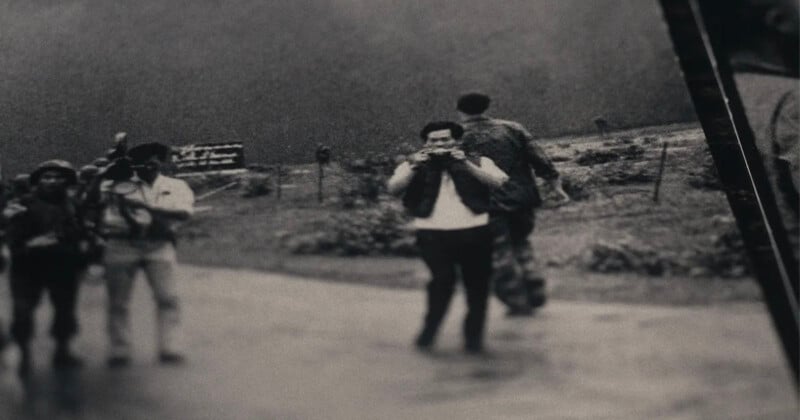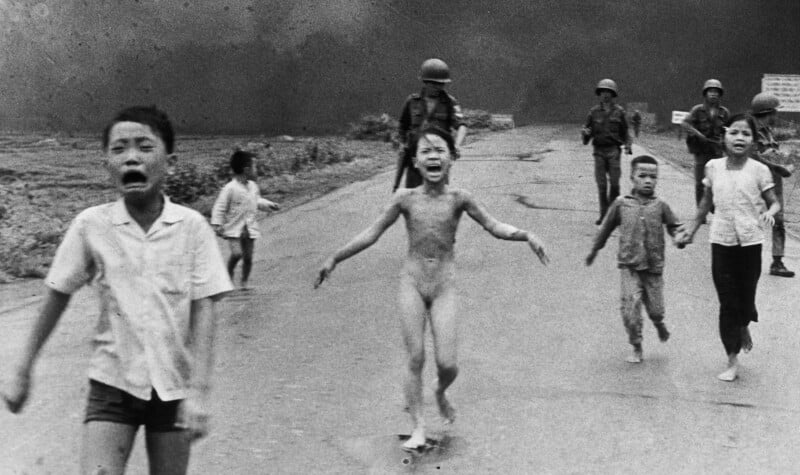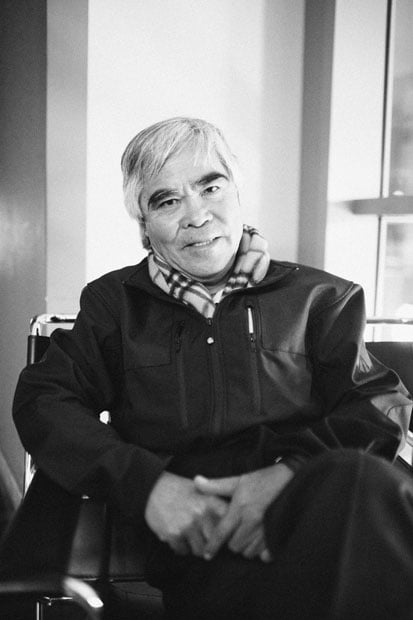Documentary Names Photographer it Claims Really Took ‘Napalm Girl’ Image

A documentary that asserts Nick Ut did not take The Terror of War, better known as Napalm Girl, aired last night and named Vietnamese stringer, Thanh Nghe, as the photographer instead.
The Terror of War was taken in Trang Bang, South Vietnam, on June 8, 1972, and shows Phan Thi Kim Phuc running toward the camera away from a napalm strike. It is arguably the most famous image from the Vietnam War and one of the most famous photos of all time.
Executive producer of The Stringer Gary Knight — a veteran photojournalist himself — tells The LA Times that the story “challenges my profession and established truth in my profession.”
The claims in the film originate from former Associated Press photo editor Carl Robinson who was working at the Saigon bureau the day when the photograph was taken.

The established story of The Terror of War goes that upon seeing the photo, Robinson believed the full-frontal nudity in the image rendered it unusable. But he was overruled by the chief of photos in Saigon, Horst Faas.
“This story doesn’t hinge on Carl,” Knight tells The LA Times. “We interviewed 55 people, 45 on camera, and did the forensic research, which has been tested. So we don’t rely on Carl’s story. That was just the beginning of the journey. And whether AP choose to talk about Carl as a disgruntled employee or not, it doesn’t make him a bad witness per se. A lot of whistleblowers are in the same situation. So we wouldn’t have made a film based solely on one man’s accusations. That’s not journalism.”
The film names Thanh Nghe, a driver for an NBC news crew, as the real photographer. Director Bao Nguyen says that Nghe didn’t come forward because he is an immigrant who has not been able to tell his story.
“The life that many refugees and immigrants have left behind when they’re coming to a place that’s strange and foreign, there’s this expectation that they have the same agency to tell their narratives and tell their stories, but it’s not the same,” Nguyen tells The LA Times. “This film is in many ways a reckoning of that assumption that, ‘OK, if Nghe had this truth for so long, why didn’t he say something?’
“But can you imagine coming to a new culture, a new place, just trying to take care of your family and going up to a system that he doesn’t understand and that he believes that he does not belong to? Documentary films specifically have a responsibility to try to acknowledge all these misrepresentations and systems that have existed.”
Associated Press Denials
AP says that for the past six months, it has conducted its own “painstaking research” in its response to the upcoming documentary.
Inside the 23-page report, the American news agency says it has spoken to seven eyewitnesses who were present either at the scene of the photograph or in the Saigon bureau, and none of them question Ut’s authorship of Napalm Girl.
The agency adds that it has gathered all of the photographic and film evidence to compile a visual timeline of the day but acknowledges that the picture isn’t complete because of the analog era in which the event took place.

In its review of The Stringer, Screen Daily reveals that Index Investigations from Paris also “painstakingly reassemble what went on that day”. That evidence reportedly places Ut away from the scene of the photograph. PetaPixel is yet to see the film.
“I stand by the research and the forensics,” Knight tells The LA Times. “I think Nghe is the only person who was in the right place to have taken that picture.”
Ut’s attorney James Hornstein tells The LA Times that the allegations are upsetting to the photographer “personally and emotionally.” Hornstein adds it is “outrageous” that the production company, VII Foundation, provided a platform to Robinson who “clearly has a vendetta that’s been simmering for more than 50 years.”
The girl in the photo Kim Phuc calls the documentary an “outrageous and false attack on Nick Ut” adding she would “never participate in the Gary Knight film because I know it is false.”